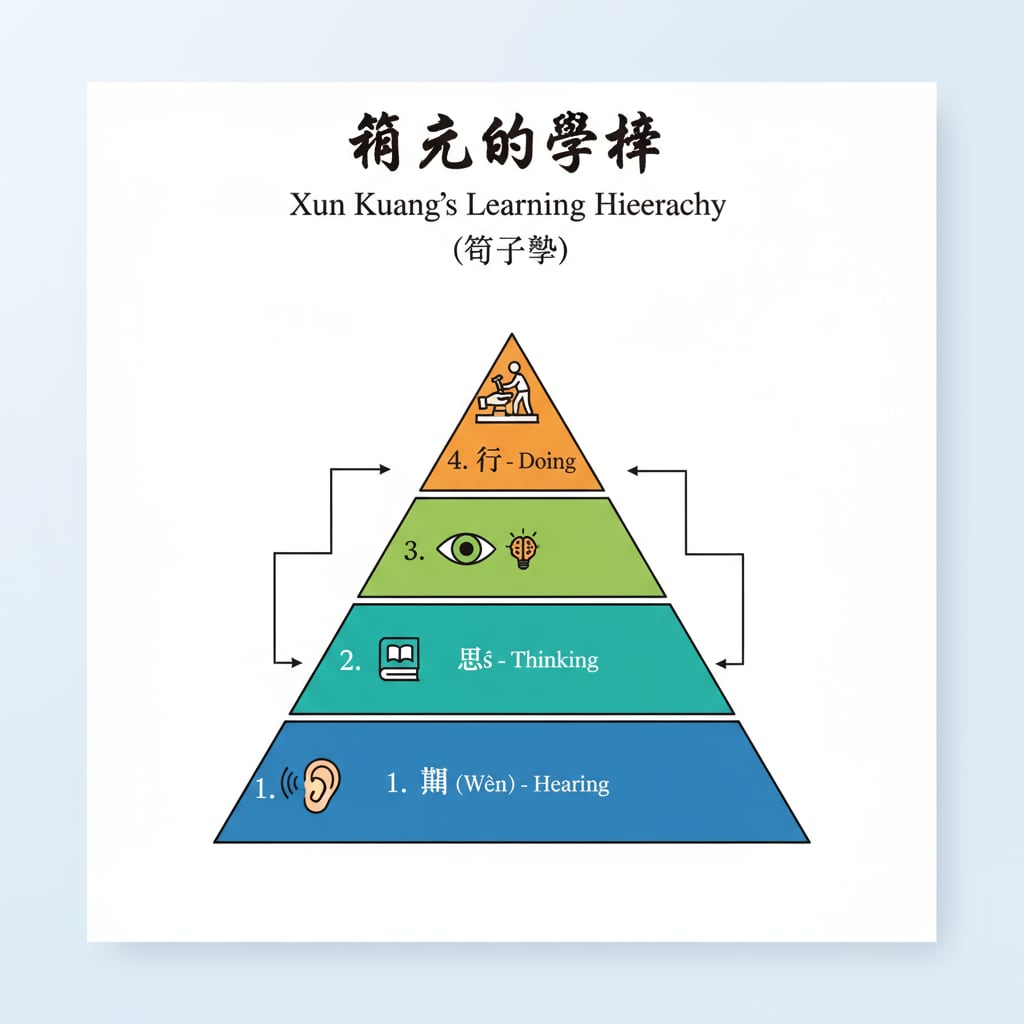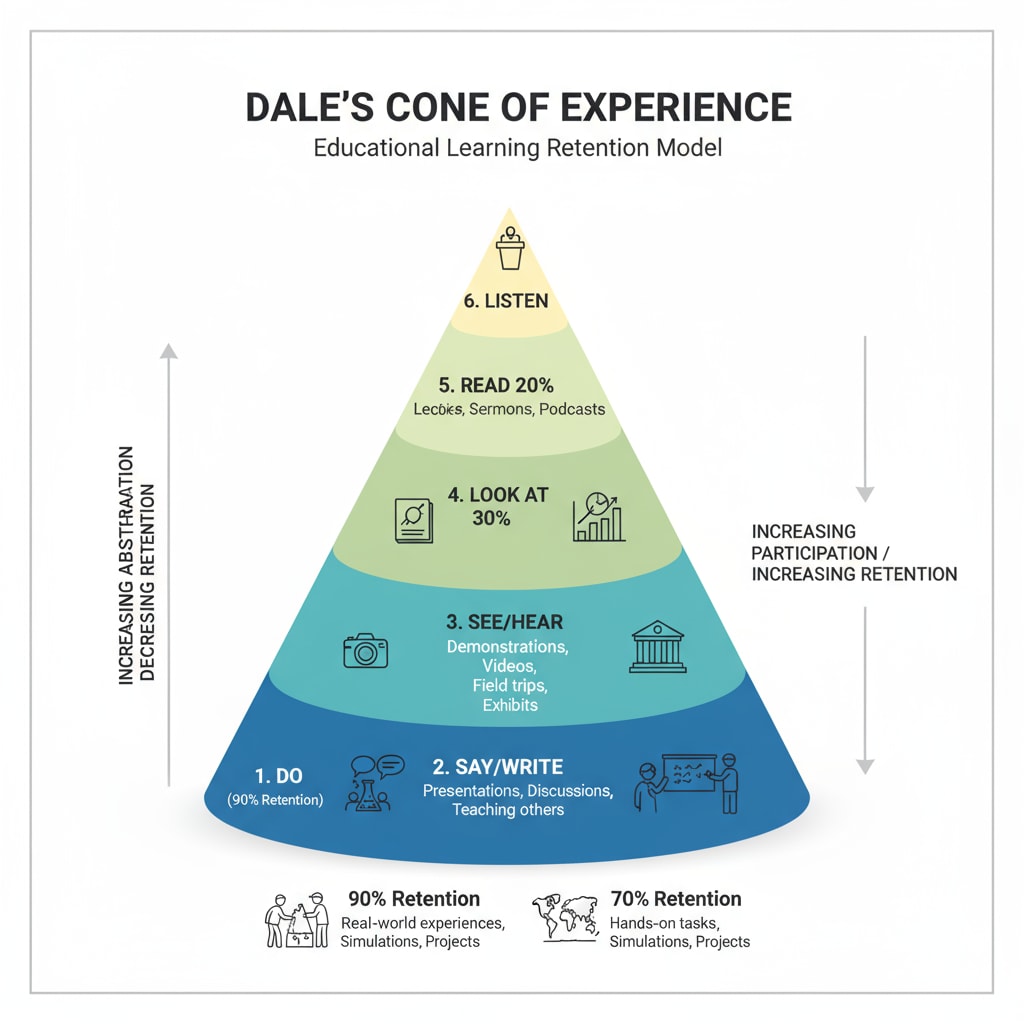Learning theories, Xun Kuang, Cone of Experience, and learning by doing are crucial concepts in the field of education. Throughout history, educators and philosophers have sought to understand the most effective ways of learning. In this article, we will explore how these ideas intersect and how “learning by doing” can unlock the potential for deep learning in K12 education.
The Wisdom of Xun Kuang’s Learning Hierarchy
Xun Kuang, an ancient Chinese philosopher, proposed a learning hierarchy that emphasized the importance of different levels of knowledge acquisition. He believed that learning started with simple hearing and seeing, but true understanding and wisdom came from actively engaging in actions. For example, merely listening to a lecture about a concept is the most basic form of learning. However, when students put that knowledge into practice, they gain a more profound understanding. Xun Kuang on Wikipedia

The Modern Perspective: Dale’s Cone of Experience
Modern educationist Edgar Dale’s Cone of Experience provides a similar framework. The cone illustrates that learning experiences vary in their effectiveness, with the most concrete and hands-on experiences at the base being the most impactful. As we move up the cone to more abstract forms of learning like reading and listening, the retention of knowledge decreases. For instance, students who participate in experiments remember the concepts better than those who only read about them in textbooks. Cone of Experience on Britannica

When we compare Xun Kuang’s ideas with Dale’s Cone of Experience, we can see that the concept of “learning by doing” is at the core of effective learning. In K12 education, this means that educators should incorporate more practical activities into the curriculum. For example, science classes can include hands-on experiments, and language arts can involve role-playing and real-life writing projects.
Readability guidance: By using short paragraphs and lists, we can clearly present the key points. Each H2 section provides a summary of the main ideas. We have also controlled the use of passive语态 and long sentences, and added transitional words like “however,” “therefore,” and “for example” to enhance the flow of the article.


